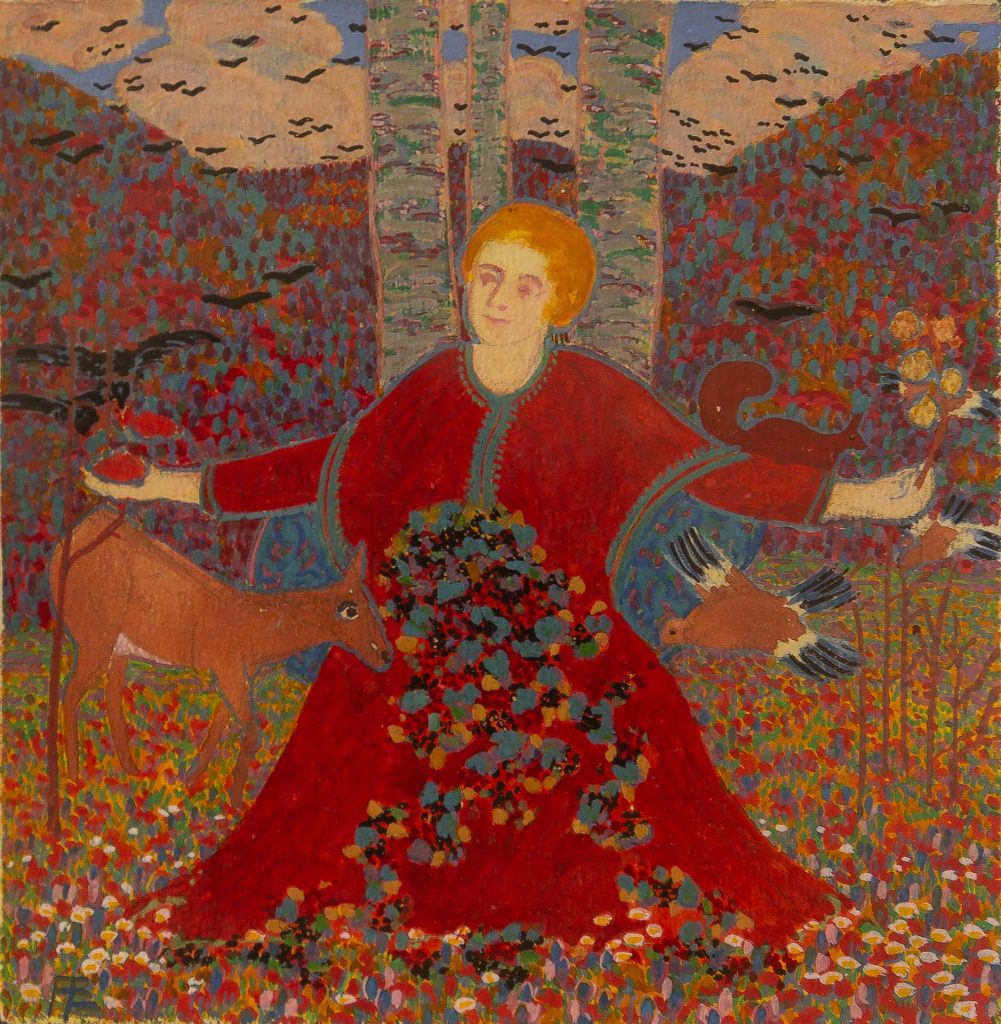André Evard’s miniature “Lady with Deer” (1908, watercolor on paper) is an impressive example of his early engagement with Art Nouveau and its design principles. This small-format work demonstrates Evard’s feel for ornamental surface effect, symbolic representation of nature, and a strictly symmetrical image composition.
At the center of the image sits a female figure in bright red, who – like an icon – is positioned with outstretched arms in the central axis of the image. Her arms reach to both sides in a balanced composition: on the left a deer, on the right a bird, a squirrel, and a flower – elements that stand for gentleness, closeness to nature, and harmony. The figure’s calm aura makes her seem like a personification of nature itself.
The image symmetry is additionally emphasized by two birch trunks in the background, which stand like columns behind the woman and give her an almost sacred, throne-like presence. The hilly mountain landscapes on the left and right are also repeated in shape and color distribution, which gives the scene a meditative balance.
Typical of Art Nouveau is the flat, decorative treatment of nature: the ground is a lively carpet of colored floral dots, the trees and birds fit into rhythmic patterns, and the woman’s red robe is also adorned with ornamental leaf shapes. The image depth recedes in favor of the decorative flatness – a principle reminiscent of models such as Ferdinand Hodler or the Nabis.
“Lady with Deer” testifies to Evard’s remarkable ability to combine symbolism, nature observation, and ornamental stylistic devices in a balanced pictorial structure – an early highlight of his work, in which his later stylistic diversity is already announced.
